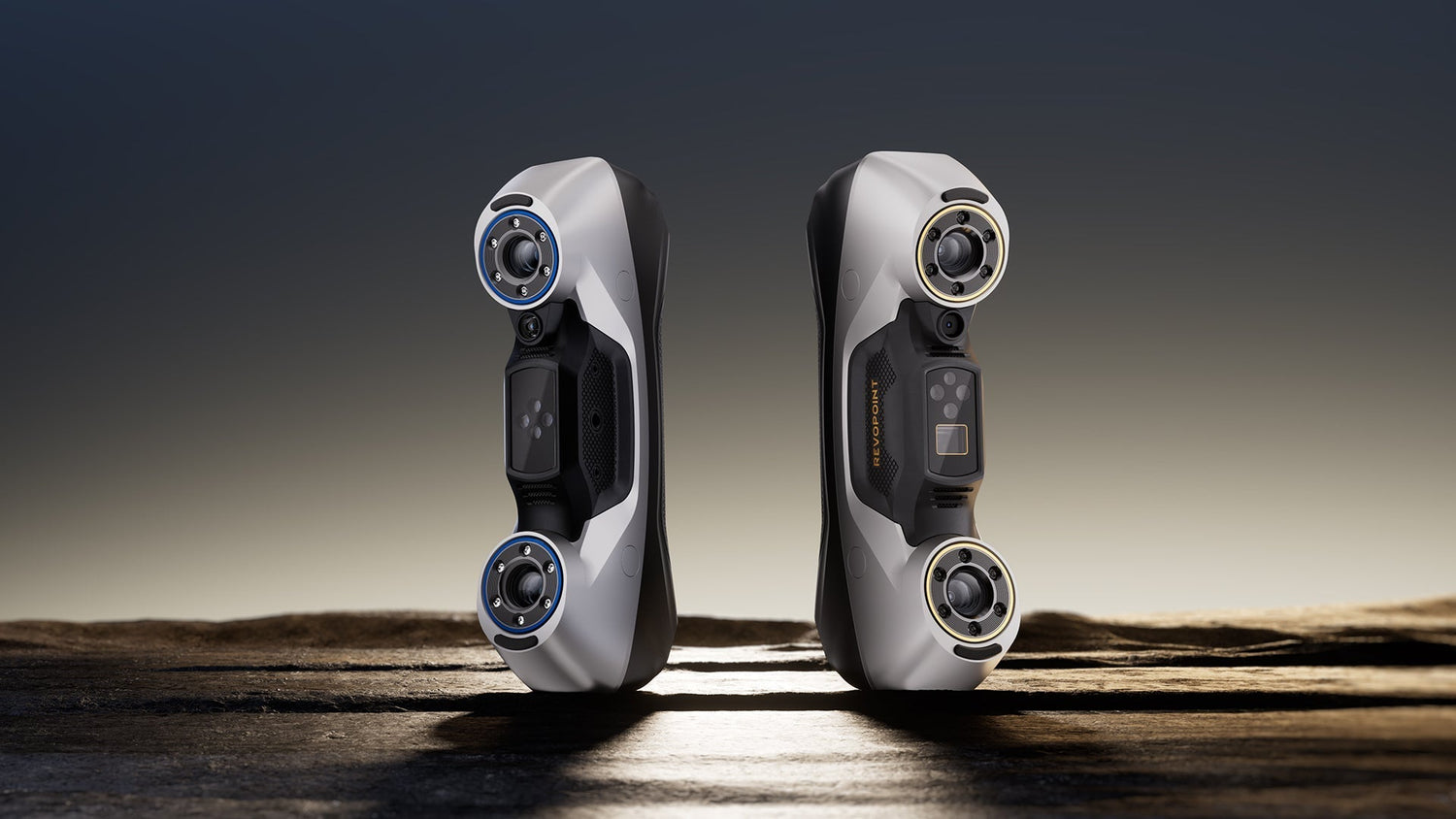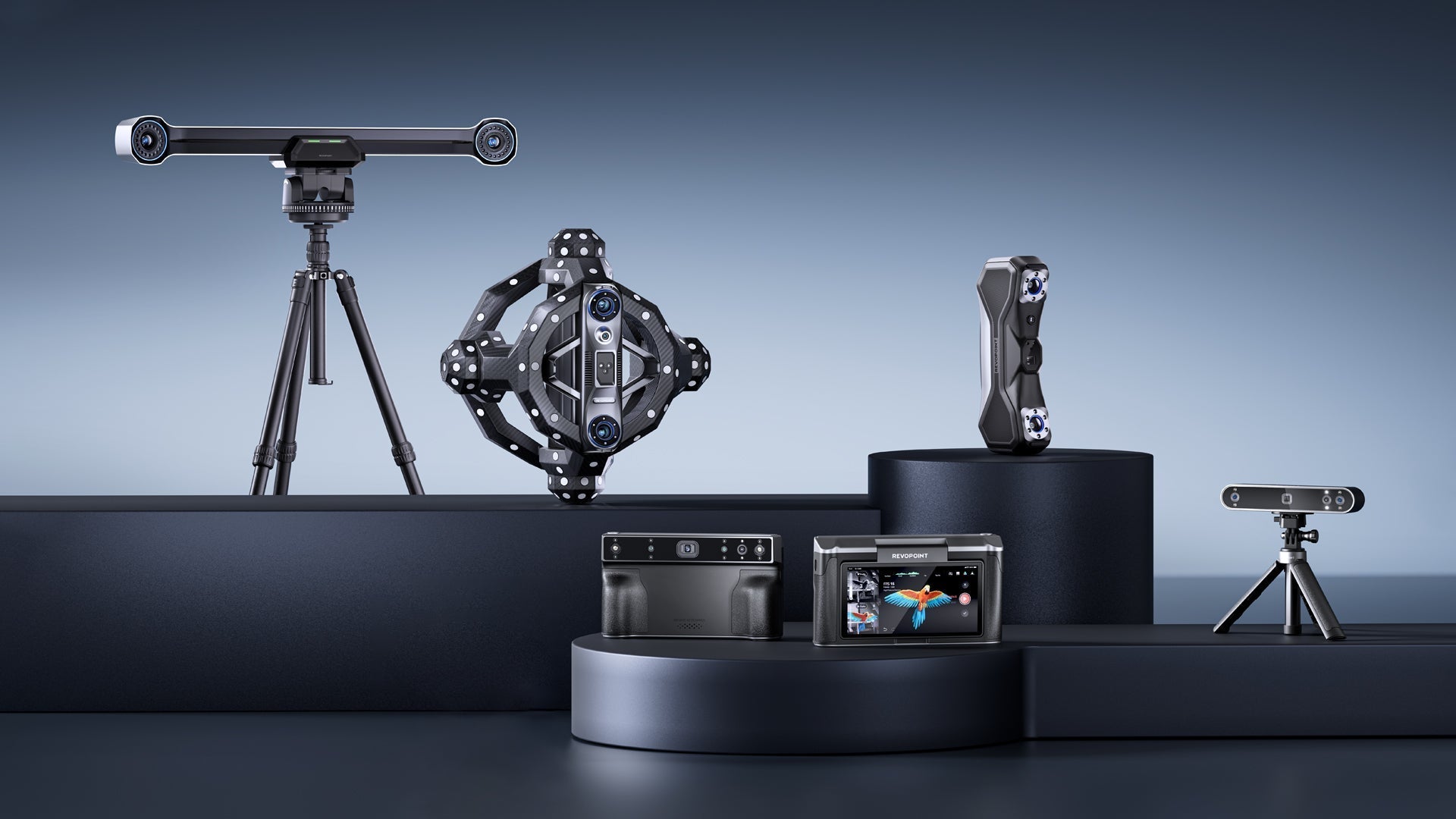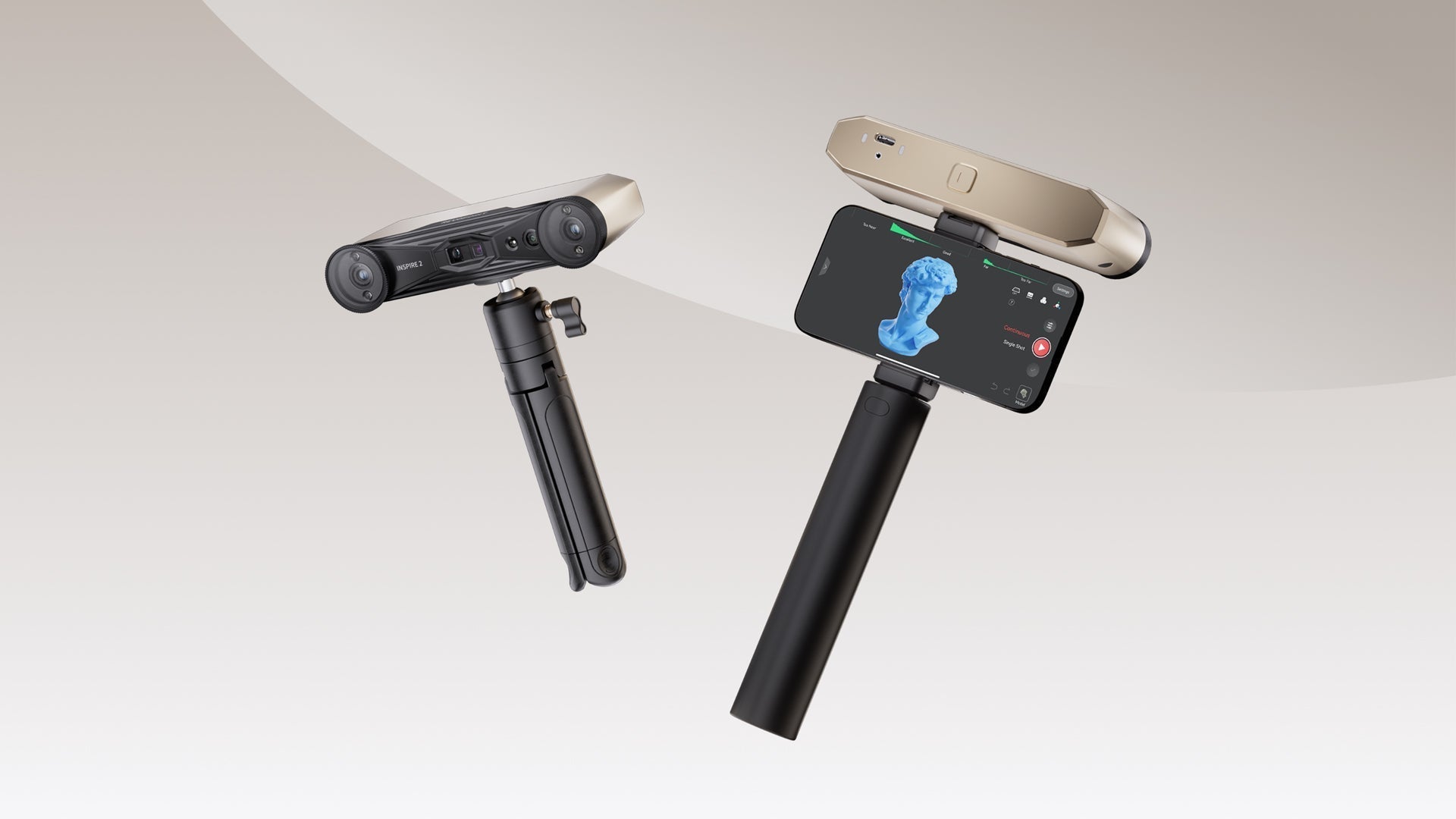Are you unsure if you need the MetroY or MetroY Pro 3D scanner ? Then, let’s go over the key differences between them. First, we’ll take a look at the differences, then see what’s the same.
Scanning Modes
Both scanners share the same three methods of performing laser scans, with the only difference being MetroY Pro’s four extra laser lines. The real key difference is MetroY Pro’s two extra full-field structured blue light modes.
|
MetroY |
MetroY Pro |
|
30 Crosslines |
34 Crosslines |
|
15 Parallel Lines |
15 Parallel Lines |
|
Single Line |
Single Line |
|
N/A |
Full-field |
|
N/A |
Auto Turntable |
4 More Cross Lines
MetroY Pro’s four extra laser lines give around a 12% boost in scanning speed (1.5 million points per second vs. 1.7 million points per second), which is nice but not essential if you only need to do laser scans.
Full-field
This is where the key difference starts. The full-field mode offers high-speed scanning at up to 7 million points per second, meaning a scan that might take a few minutes with the laser mode can be done in less than half that time.

It can also perform high-resolution scans of complex, feature-rich objects without the need for markers, relying on the natural surface details for frame alignment. When scanning objects with few or no distinguishing features, the system still works efficiently by using markers to ensure accurate frame stitching and data capture. Making the full-field mode suitable for both detailed and minimal-surface objects, while maintaining speed and accuracy.
Unlike the laser modes, dark and shiny surfaces will require scanning spray when using this mode.
Auto Turntable
Easily automate your 3D scanning process with the MetroY Pro’s Auto Turntable mode. When paired with the Dual-axis Turntable (included with MetroY Pro), it enables hands-free scanning by rotating the object while the scanner captures single-frame shots from multiple angles. This is especially useful for small to mid-sized objects where consistent alignment is essential.

Instead of manually repositioning the item, you can configure the rotation settings in the software and let the scanner do the work. The result is a cleaner, more efficient workflow that reduces the chance of alignment errors and speeds up the whole process.
MetroY Pro’s Extra Accessories
It’s not just the scanning modes that differ; the MetroY Pro also comes with three more accessories to ensure you have everything you need to use it to its maximum potential.
Dual-axis Turntable
To use the Auto Turntable mode, MetroY Pro comes with a Dual-axis Turntable that offers a 360° clockwise or counterclockwise rotation, ±30° tilt, and adjustable speed, ensuring you can fully capture your workpiece. It’s also handy for scanning objects using the Full-field mode.

Mobile Kit
The included Mobile Kit (III) with its 5500 mAh power bank grip, phone holder, and all the connectors you need, makes it easy and comfortable to use PC-to-Mobile streaming for cable-free scanning over your Wi-Fi network.
What’s the Same
Laser Modes
While the previously mentioned cross-line modes on both the MetroY and Pro are great for rapidly scanning surfaces, including dark or shiny ones, the MetroY series comes with two more laser modes for complete surface capture capabilities.

15 Parallel Lines
With 15 blue laser lines working in parallel, the MetroY series captures fine details and intricate surface features with high accuracy. This advanced scanning pattern enhances the scanner’s ability to handle complex geometries, textured surfaces, and tight edges, making it well-suited for accuracy-demanding applications.
Single Line
Ensure your model is complete with even deep holes, crevices, and grills accurately being captured using a powerful single blue laser line.
Accuracy
Both scanners have the same volumetric accuracy of 0.02 + 0.04 mm x L (m), ensuring accurate 3D data capture. This level of accuracy makes them ideal for demanding tasks like reverse engineering, quality inspection, and measurement-critical applications where detail and dimensional accuracy are essential.
Streaming
Being tethered to your PC with a 3D scanner can be inconvenient, especially when trying to scan something too large or heavy to easily move around by hand. Fortunately, the MetroY series built-in Wi-Fi 6 allows you to disconnect from the cables and scan with great mobility.
It works by streaming the data from the scanner to a PC to use its processing power, then from the PC to your mobile device in real-time. Live feedback appears instantly on the companion streaming app, Revo Mirror, so you can easily catch blind spots or missing data as you move around your object with total freedom.
Calibration
Frequent calibrations aren't usually necessary and are typically only needed after long periods of inactivity or when the scanner is roughly transported. However, when calibration is required, it's essential to use a board that can restore your scanner to peak accuracy. That's why the MetroY series features a precisely manufactured photolithographic calibration board, ensuring consistent accuracy and reliability every time you calibrate.
MetroY or MetroY Pro?
So MetroY with only laser modes or MetroY Pro with laser modes and full-field scanning? That's the question. What's the answer? Firstly, think about the types of objects you're scanning and the level of detail you need.
Then consider the following:
Laser scanning is generally better suited for objects with complex geometries or surface challenges, such as dark or reflective materials, because it's less sensitive to surface appearance.
Full-field scanning offers higher resolution and faster data capture (especially when scanning feature-rich objects that don't require marker placement), making it ideal for capturing fine details on objects quickly.
If your scanning needs are consistent and align well with what laser scanning offers, a laser-only system may be sufficient. However, if you work with a variety of parts or want more flexibility in adapting to different surface types and detail requirements, a scanner that supports both modes can offer a more versatile and future-proof solution.
Pre-order MetroY or MetroY Pro now and get 10% off.



Leave a comment
This site is protected by hCaptcha and the hCaptcha Privacy Policy and Terms of Service apply.